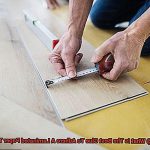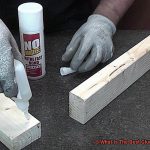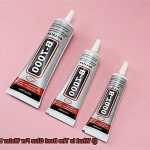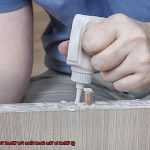Are you tired of waiting around for glue to dry?
Look no further – fast-drying glue is here to save the day. Whether you’re a DIY lover or a professional artist, this magical adhesive is a game-changer.
Say goodbye to the frustration of watching paint dry (literally.) and hello to instant gratification.
With fast-drying glue, your projects will be ready in no time, allowing you to keep that creative momentum going strong. No more smudges or accidental detachments ruining your masterpiece.
So if you’re in need of an adhesive that’s hassle-free and time-saving, fast-drying glue is about to become your new BFF.
What is Super Glue?
Contents
- 1 What is Super Glue?
- 2 Advantages of Super Glue
- 3 Factors to Consider When Choosing the Best Glue That Dries Fast
- 4 Different Types of Fast-Drying Adhesives
- 5 Safety Precautions When Using Super Glue
- 6 How Temperature and Humidity Affect Drying Time
- 7 Tips for Using Fast-Drying Adhesives Effectively
- 8 Conclusion
Super glue, also known as cyanoacrylate adhesive, is a remarkable and versatile adhesive that has revolutionized bonding in households, workshops, and industries worldwide. In this article, we will explore the fascinating science behind super glue, uncovering its composition, working mechanism, applications, and safety precautions.
Composition and Working Mechanism:
At the heart of super glue lies cyanoacrylate, a potent adhesive derived from either ethyl or methyl cyanoacrylate. When exposed to moisture, the cyanoacrylate molecules undergo a chemical reaction known as anionic polymerization. This reaction triggers rapid solidification of the liquid adhesive, forming incredibly strong bonds in a matter of seconds.
Versatility and Applications:
The versatility of super glue is truly exceptional. It can bond an extensive range of materials together, including metal, plastic, ceramic, glass, rubber, and wood. This makes it an ideal choice for repairing broken items such as household appliances, toys, or even jewelry. Crafters also rely on super glue for various projects due to its quick-drying nature and reliable adhesion.
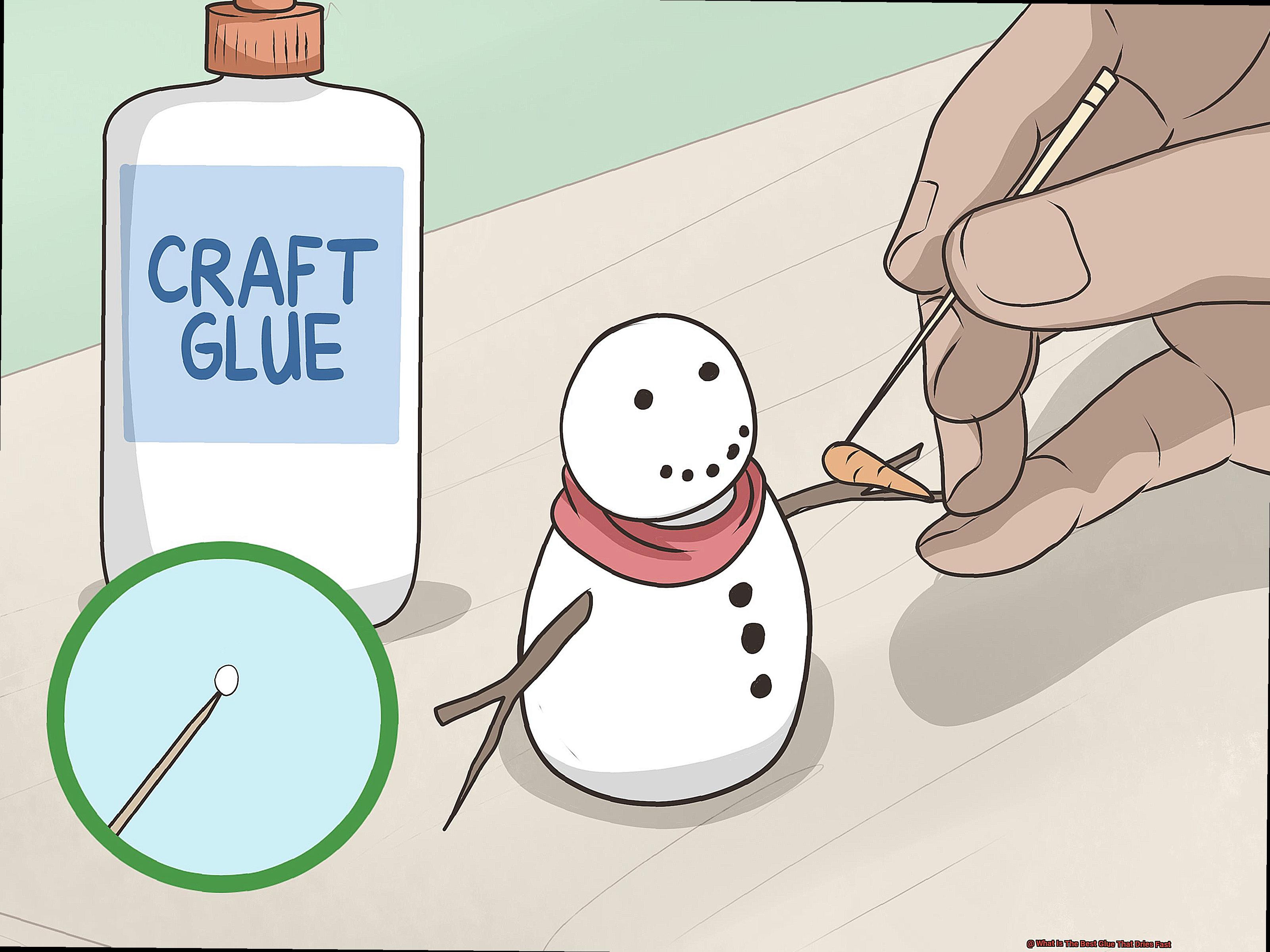
Forms and Viscosity:
Super glue is available in two main forms: liquid and gel. Liquid super glue is commonly dispensed through small tubes or bottles with a fine nozzle. It is excellent for precise applications where thin layers of adhesive are needed. On the other hand, gel super glue has a thicker consistency that allows it to stay in place better, making it suitable for vertical or overhead bonding.
Safety Precautions:
While super glue offers exceptional bonding power, it is crucial to handle it with caution. The adhesive can bond skin almost instantly upon contact, potentially causing injuries. To avoid accidents, always wear gloves when using super glue and work in a well-ventilated area. In case of accidental skin contact, it is important not to pull or force the bonded skin apart. Instead, soak the affected area in warm soapy water and gently separate the skin using a blunt object.
Advantages of Super Glue
When it comes to fixing things around the house or working on craft projects, having a reliable adhesive on hand is essential. And what better adhesive to have than super glue? This powerful adhesive offers a range of advantages that make it the ultimate bonding solution.
First and foremost, super glue is known for its quick and strong bonding capabilities. As soon as it makes contact with a surface, it forms an instant bond, creating a tight and durable connection. Whether you’re repairing a broken household item or assembling intricate craft pieces, you can trust super glue to provide a strong and lasting bond.
Another advantage of super glue is its versatility. It can be used on a wide range of materials, including metal, plastic, wood, ceramics, leather, and even rubber. This versatility makes it the go-to adhesive for various projects and repairs. No matter what materials you’re working with, super glue has got you covered.
Precision application is another standout feature of super glue. It typically comes in small bottles or tubes with a fine applicator tip, allowing for precise and controlled application. You can apply the adhesive exactly where it’s needed without any mess or waste. This is especially handy when working with delicate or small items that require accurate bonding.
Super glue is also resistant to moisture and heat. Once it cures, it creates a waterproof seal that can withstand exposure to water, humidity, or even extreme temperatures. This makes it suitable for both indoor and outdoor applications, as well as in environments with fluctuating temperature conditions.
One of the biggest advantages of super glue is its quick drying time. As the name suggests, it dries fast – within seconds or minutes – allowing you to move on with your project quickly. This saves time and enhances efficiency, especially when working on time-sensitive repairs or tasks.
Another perk of super glue is its long shelf life. When stored properly in a cool and dry place, it can last for years without losing its effectiveness. This means you can keep a bottle of super glue on hand for whenever you need it, ensuring that you always have a reliable adhesive available.
Last but not least, super glue typically doesn’t require clamping or holding until it dries. Once applied, it quickly bonds the surfaces together, eliminating the need for additional support. This allows you to continue working on your project without interruptions or the need for extra tools.
Factors to Consider When Choosing the Best Glue That Dries Fast
In this blog post, we will explore the key factors to consider when choosing the best glue that dries fast.
- Bonding Materials: Different glues are designed for specific materials like wood, metal, plastic, or fabric. It’s essential to choose a glue that is compatible with the materials you are bonding to ensure a strong and durable bond.
- Drying Time: The drying time of glue can vary significantly depending on the type and brand. Some glues dry within seconds, while others may take minutes or even hours to fully cure. Consider the urgency of your project and select a glue that offers a drying time suitable for your needs.
- Application Method: Glues come in various forms – liquid, gel, or adhesive tapes. Liquid glues are great for porous materials like wood, while adhesive tapes are perfect for quick and easy bonding without any mess. Gel-based glues work wonders on vertical surfaces as they don’t drip or run. Choose a glue that matches your preferred application method for convenience and ease of use.
- Strength and Durability: Some glues provide stronger bonds than others. Assess your project’s requirements and choose a glue that offers the necessary strength and durability.
- Temperature Resistance: If your project will be exposed to extreme weather conditions, choose a glue that can withstand high or low temperatures without compromising its adhesive properties.
- Toxicity and Safety: Pay attention to the toxicity and safety of the glue, especially if children are involved or if it will be used in food-related applications. Look for non-toxic, odorless glues that are safe for your specific use.
- Storage and Shelf Life: Consider the storage conditions required to maintain the glue’s effectiveness and longevity. Some glues have a limited shelf life once opened, while others can be stored for an extended period.
Different Types of Fast-Drying Adhesives
When it comes to fixing, crafting, or creating, time is of the essence. That’s where fast-drying adhesives come to the rescue. These magical glues bond materials in a flash and save the day. In this article, we’ll dive into the world of fast-drying adhesives and explore their different types, advantages, and limitations.
Super Glue – The Speedy Savior:
Super glue, also known as cyanoacrylate adhesive, is the superhero of fast-drying adhesives. With its lightning-fast bonding power, it forms an unbreakable bond within seconds. Whether you’re fixing metal, plastic, rubber, or ceramics, super glue has got your back. Its strength and durability make it perfect for quick repairs.
Advantages: Quick-drying, strong bond, versatile usage on various materials.
Limitations: Can bond skin instantly if not handled carefully, may not work well on porous surfaces.
Epoxy Resin – The Mighty Mix:
Epoxy adhesives are a powerful duo of resin and hardener that join forces to create a durable bond. Once mixed, these adhesives provide a few minutes of working time before solidifying completely. Their strength makes them ideal for heavy-duty projects involving metals, glass, ceramics, or certain plastics.
- Advantages: Excellent bonding strength, ability to adhere to different surfaces.
- Limitations: Requires precise mixing ratio, longer curing time compared to other fast-drying adhesives.
Acrylic Adhesive – The Versatile Wonder:
Acrylic adhesives are like chameleons – they can bond almost anything. Available in liquid or gel forms, these adhesives dry quickly and create a strong hold on materials like plastic, metal, glass, fabric, and foam. They have a short setting time and reach full strength within 24 hours.
Advantages: Fast-drying, versatile usage on various materials.
Limitations: May not work well on high-stress applications, limited flexibility.
UV-Curing Adhesive – The Light-Activated Magician:
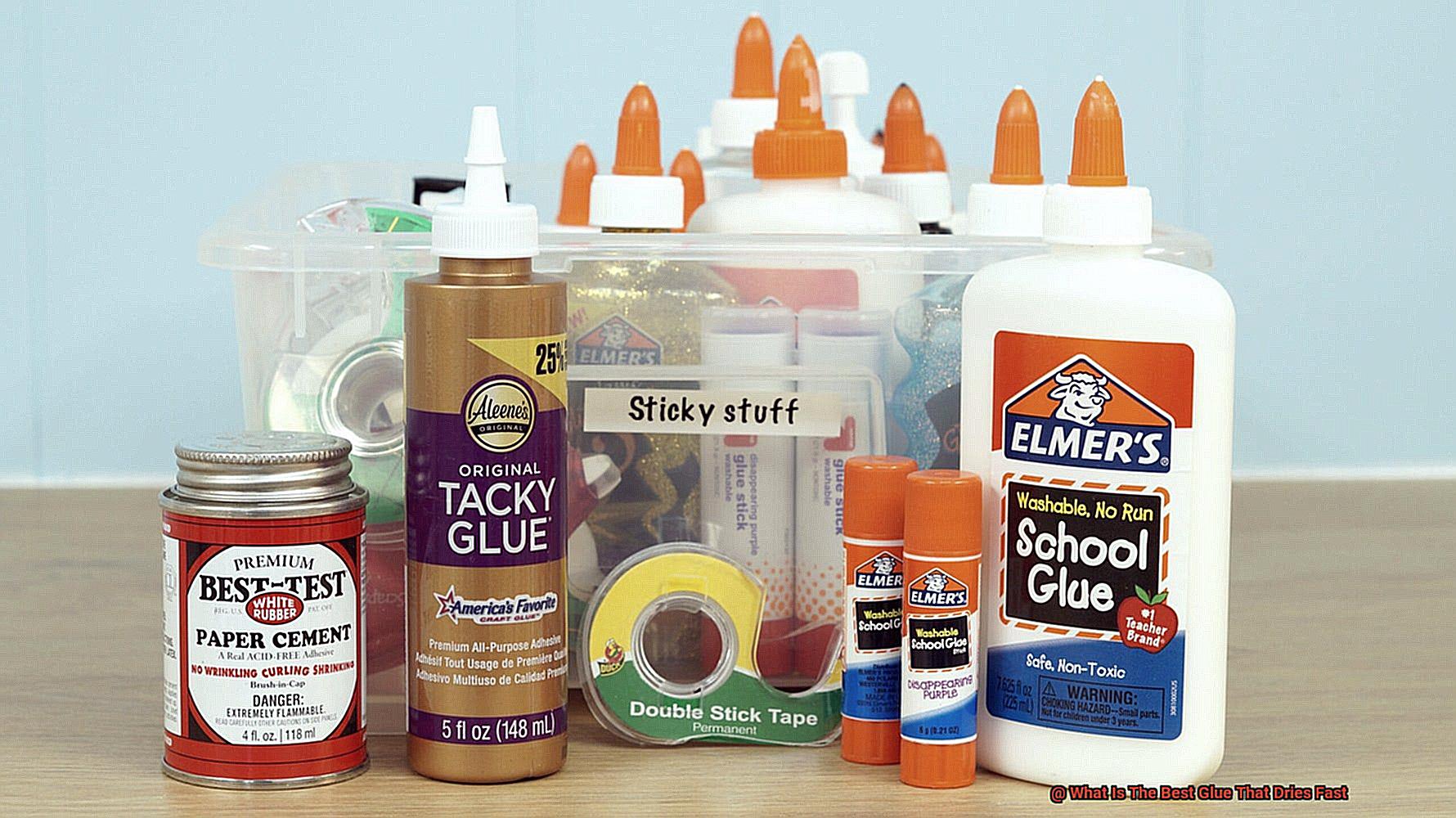
UV-curing adhesives harness the power of ultraviolet light to create rapid bonds. These adhesives remain in liquid form until exposed to UV light, triggering a chemical reaction that solidifies them instantly. Ideal for precise alignments and bonding glass, plastics, metals, and some rubbers.
Advantages: Instant curing with UV light, high precision bonding.
Limitations: Requires UV light source for curing, limited usage on certain materials.
Safety Precautions When Using Super Glue
When working with super glue, it is crucial to prioritize safety to avoid any sticky situations. By following these safety precautions, you can protect yourself and others while enjoying the amazing adhesive powers of super glue.
- Protect your skin: Always wear protective gloves when handling super glue. This powerful adhesive can bond skin instantly, causing irritation or burns. Prevention is key, so don’t take any chances with your precious skin.
- Ensure ventilation: Super glue releases fumes that can be harmful if inhaled for too long. To keep the air flowing and those fumes at bay, work in a well-ventilated area. Open windows or use a fan to create proper airflow.
- Apply sparingly and precisely: Less is more when it comes to using super glue. Apply it sparingly and precisely to avoid accidental spills or excess glue sticking to unintended surfaces. Precision is your secret weapon here.
- Handle accidents calmly: If super glue gets on your skin, don’t panic. Trying to force apart glued skin can cause more damage. Instead, soak the affected area in warm soapy water and gently peel off the dried glue. If necessary, seek medical advice.
- Keep away from children and pets: Super glue bottles are like magnets for curious hands and paws. Keep them out of reach to prevent accidental ingestion or bonding. Protect your little ones and furry friends from any harm.
- Proper storage: To maintain the longevity of your super glue, seal the cap tightly after each use. This prevents drying out or leaking. Store it in a cool, dry place away from direct sunlight for optimal performance.
- Eye safety first: If super glue gets in your eyes (ouch.), seek immediate medical attention. Avoid rubbing your eyes, as this can worsen the situation. Rinse your eyes with water while waiting for professional help to arrive.
How Temperature and Humidity Affect Drying Time
The answer lies in the intricate interplay of temperature and humidity. Embark on a captivating journey as we delve into the enigmatic realm of glue, unraveling how these factors weave their magic to influence drying time.
The Sizzle and Fizzle:
When the mercury rises, so does the frenzied dance of glue molecules. The surge in kinetic energy propels them into a rapid waltz, hastening the evaporation of solvents or water content in the glue. Result? A speedy drying time that leaves you amazed. In contrast, frigid temperatures send these molecules into a sluggish shuffle, prolonging the drying process with every languid step.
Finding the Goldilocks Zone:
While scorching heat can turbocharge drying, beware the perils of extremes. Excessive heat can transform certain glues into brittle, ineffective messes. Thus, it is essential to heed the manufacturer’s recommended temperature range for optimal performance. Achieving that sweet spot ensures your glue remains steadfast and reliable.
Humidity: The Mysterious Enigma:
Enter humidity – the enigmatic accomplice in our tale. This elusive presence in the air possesses the power to sway drying time. High humidity levels cloak our glue in a moist embrace, impeding evaporation and lengthening the drying process. On the flip side, low humidity plays cheerleader, fast-tracking evaporation and accelerating drying. Striking a harmonious balance becomes paramount – moderate humidity levels generally bestow us with optimal results.
Guided by the Masters:
To unlock the true potential of your glued creations, honor the wisdom of those who crafted your glue. Consult the manufacturer’s instructions diligently. These guides, born from meticulous testing, unveil the precise temperature and humidity conditions that deliver the pinnacle of performance.
Tips for Using Fast-Drying Adhesives Effectively
Fast-drying adhesives, such as super glue, are indispensable for DIY projects and repairs due to their quick bonding time and strong hold. However, using them effectively requires some know-how. In this article, we will share tips and tricks to help you make the most of fast-drying adhesives and achieve successful bonding results.
Read and Follow Instructions:
Before using any fast-drying adhesive, thoroughly read and follow the manufacturer’s instructions. Each adhesive may have specific application techniques or drying times. Adhering to these guidelines will ensure optimal results and prevent any potential mishaps.
Prepare the Surfaces:
To create a strong bond, ensure that the surfaces you intend to bond are clean and free from any dirt, dust, or grease. Use a mild detergent or alcohol-based cleaner to remove contaminants that may interfere with the adhesive’s effectiveness. Additionally, lightly roughen or sand the surfaces to provide a better area for the adhesive to grip onto.
Apply Sparingly:
Remember, a little goes a long way with fast-drying adhesives. Apply a small amount and spread it evenly over the surface. Excessive adhesive can lead to glue squeeze-out or longer drying times. A thin and even layer is usually all you need for most applications.
Join Firmly:
After applying the adhesive, firmly join the surfaces together. Avoid using excessive pressure that could cause squeeze-out or misalignment. Consider using clamps or temporary supports to hold the pieces in place until the adhesive sets. This ensures a secure bond and prevents any movement that could compromise the adhesive’s effectiveness.
Temperature and Humidity:
Be mindful of the working environment’s temperature and humidity levels. Extreme heat or cold can alter the adhesive’s properties and compromise its effectiveness. Ensure that the temperature is within the recommended range specified by the manufacturer.
Allow Sufficient Curing Time:
Fast-drying adhesives may set quickly, but they still require time to fully cure and reach their maximum strength. Be patient and avoid subjecting the bonded object to stress or load until the adhesive has fully cured. Check the manufacturer’s recommendations for curing time.
Conclusion
To conclude, the clear champion in the search for the best glue that dries fast is none other than super glue. This extraordinary adhesive, also known as cyanoacrylate adhesive, possesses a multitude of advantages that make it the ultimate solution for bonding.
First and foremost, super glue is renowned for its lightning-fast and rock-solid bonding capabilities. The moment it touches a surface, it forms an instantaneous bond, creating a tight and unyielding connection. Whether you’re fixing a shattered household item or piecing together intricate craft components, you can rely on super glue to deliver an unwavering and enduring bond.
Another standout feature of super glue is its remarkable versatility. It can be used on a vast array of materials, ranging from metal and plastic to wood and ceramics, even extending to leather and rubber. This incredible adaptability makes it the go-to adhesive for an assortment of projects and repairs. No matter what materials you find yourself working with, rest assured that super glue has got your back.
Precision application is yet another exceptional characteristic of super glue. Typically packaged in small bottles or tubes with fine applicator tips, this adhesive allows for meticulous and controlled application. You can apply it precisely where it’s needed without any mess or waste. This proves especially advantageous when working with delicate or minuscule items that demand precise bonding.
Super glue also boasts resistance against moisture and heat. Once fully cured, it forms a watertight seal capable of withstanding exposure to water, humidity, or even extreme temperatures. This renders it suitable for both indoor and outdoor applications, as well as environments featuring fluctuating temperature conditions.
One of the most significant advantages of super glue lies in its rapid drying time. True to its name, it dries at lightning speed – within seconds or minutes – enabling you to swiftly proceed with your project. This not only saves precious time but also enhances efficiency, particularly when tackling time-sensitive repairs or tasks.
Another perk of super glue is its impressively long shelf life. When stored correctly in a cool and dry location, it can remain effective for years on end. This means you can keep a bottle of super glue within reach for whenever the need arises, ensuring that you always possess a reliable adhesive at your disposal.
Last but certainly not least, super glue typically doesn’t necessitate clamping or holding until it dries. Once applied, it rapidly bonds the surfaces together, obviating the need for additional support.


